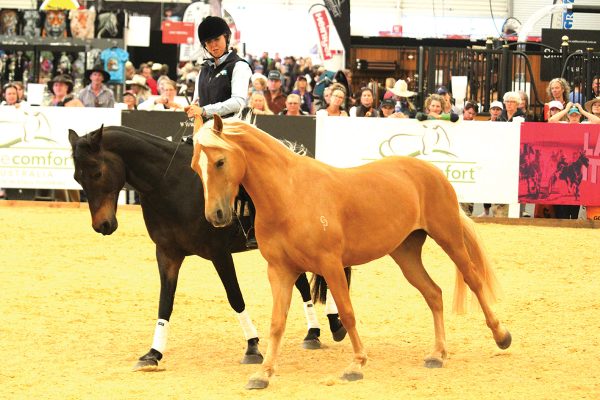
Imagine working on a multi-step math problem at school: The teacher tells you your answer is wrong, but doesn’t give any clues on why it’s wrong. You start to work on the problem again, with the same result. She won’t even tell you if you’re on the right track. We’ve all been there, and it’s frustrating! Horses often feel the same way about training, as they try to figure out what we’re asking of them. Clicker training removes a lot of that frustration because it lets the horse know when he is on the right track and exactly when he gets it right instead of getting punished for the wrong answer when he has no idea what the right answer could be.
How Clicker Training Works
Clicker training is a method of teaching an animal a behavior using positive reinforcement. It’s kind of like when your parents give you money or ice cream for doing a chore or getting good grades.
The clicker is usually a small box that, when pressed, makes a loud, distinct “click.” It’s used to mark the exact behavior you want and lets the animal know a reward is coming to them. Food is the most common reward, but it can also be petting or verbal praise.
The important thing to remember is that the reward has to be something the learner—your horse—likes enough to want to repeat whatever he just did to get that reward. And the reward needs to be delivered quickly, within a few seconds of the click.
Because you are marking when he gets something right, instead of correcting for error, most animals will become faster, more willing learners.
Here is the basic breakdown of how the clicker training system works with a horse that already knows the verbal cue to stop:
1. You say “whoa” to your horse.
2. Horse stops and you click right at the same time as all four feet come to a stop.
3. You give a reward within a few seconds of the click.
Getting Started with Clicker Training
To start clicker training, you first have to “load the clicker,” meaning you have to teach the horse that when he hears that sound, a reward is coming. To do this, click the clicker and immediately feed your horse his favorite treat. For loading, you want that clicker to mean something really good!
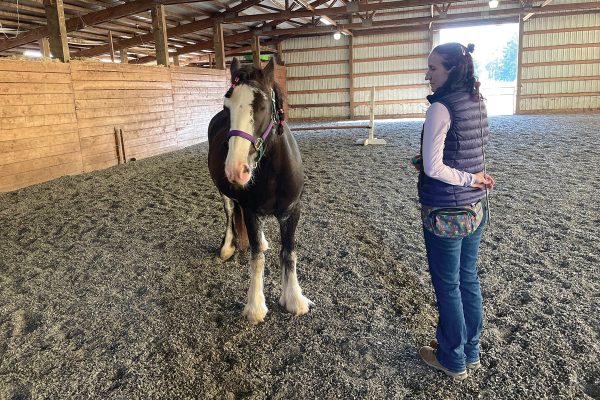
During this time, it’s best if your horse is just standing still. Do this 10 times in a row, then take a break and do it again.
You can test to see if your horse understands by waiting until he is distracted a bit, and then click: Does he turn his head quickly to look at you because he knows a reward is coming? If so, then the clicker is loaded and you are ready to go! If not, do a few more loading sessions before moving on to training a behavior.
The next step is teaching your horse to target something—usually a ball on a stick. This behavior can then be used to teach your horse many other things, such as the perfect haunch turn for your showmanship pattern. I was never able to get a perfect haunch turn with any horse until I trained it using a clicker!
You can use anything for the target stick; a long crop with a foam ball on the end works great. Some people use wood dowels and small boat buoys. You can also buy various forms of target sticks.
You will also need your clicker and a pouch with rewards that are easy to deliver and that your horse loves—you can even use your horse’s daily grain ration if he likes it.
Teaching Target
Now you’re ready to use clicker training to work on a specific desired behavior. Here’s a breakdown of each step:
Step 1: Have the clicker in one hand and the target stick behind your back in the other. Bring the stick out from behind your back and put it close to your horse’s nose, but not quite touching.
Step 2: Click and reward if your horse makes any movement toward the stick. If he moves away or stands still, that’s OK, just be patient and wait for him to figure it out.
Tip: If your horse seems very uninterested in the target stick, try moving it around slowly. Sometimes that will encourage a horse to take an interest in it. You can also try putting something yummy on it, such as a drop of apple juice, so it smells good.
Step 3: After you have rewarded your horse, put the stick behind your back to “reset” after the reward. Then bring it back out and see if your horse will touch it again.
Step 4: Once your horse is consistently touching the target stick every time you bring it out, you can start to move it further away so your horse has to move more. Build distance slowly, just a couple steps at a time.
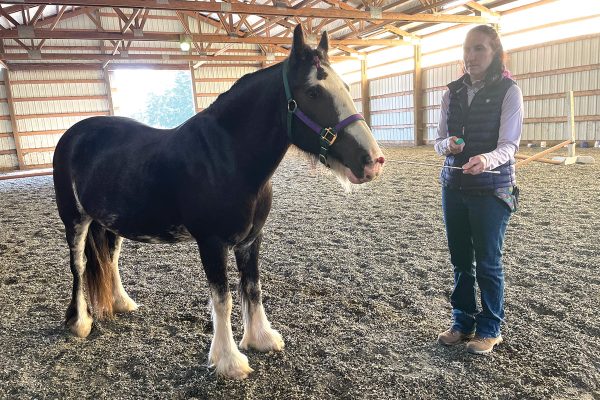
You can also move it to the side of your horse so he has to turn his head, or put it slightly above or below his muzzle to he has to move his head up and down.
Tip: Keep your clicker training sessions short! Just 5 to 15 minutes is enough, as you don’t want your horse to become bored.
Step 5: Once your horse is moving toward the target stick consistently, you can add a verbal cue if you like. You can use any word you want, although many trainers use “target” or “touch.”
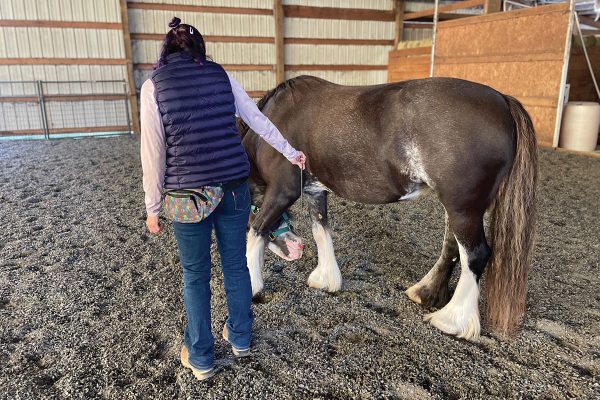
To add the cue, say the word while your horse is touching the stick, then click and treat. Do this for several repetitions. Then test the verbal cue by saying it before your horse starts to move. If he immediately goes to touch, he has it on cue!
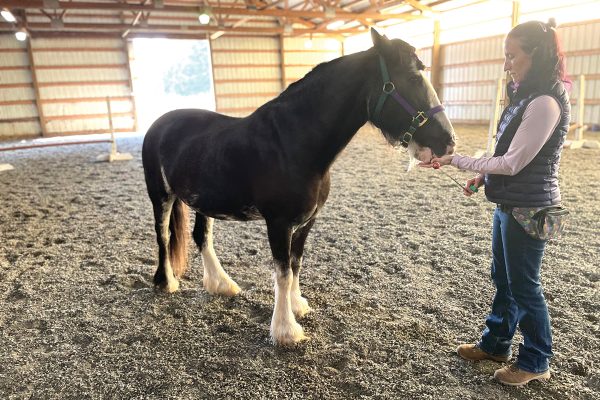
Remember that all learners are different. Some horses may move through all these steps in one session, and other horses may take several sessions. That’s OK. Just go at your horse’s own pace.
Not Just for Tricks
Once you and your horse have the basics of clicker training down, there is nothing you can’t teach him. I taught my mare a perfect western jog for pleasure shows using clicker training.
Belynda Moore, an FEI dressage rider and instructor from Spanaway, Wash., is a U.S. Dressage Federation bronze, silver and gold medalist. And she clicker trains!
“One particularly difficult exercise I commonly use clicker training for is the piaffe,” she says. “It can be very stressful to the horse, as he can feel trapped in it if you’re not careful, just by the nature of the exercise itself. Using a marker has really helped keep my horses more relaxed and happier.”
Kristina Lotz is a former CPDT-KA professional dog trainer and now trains her own dogs, horses, sheep and even a bunny with clicker training.
Learn More
There are many books on clicker training for horses. Georgia Bruce, an Australian-based clicker trainer and creator of Click with Horses, has an online program that includes everything from starting a horse to advanced ridden maneuvers.
This article about clicker training appeared in the January/February 2023 issue of Young Rider magazine. Click here to subscribe!


